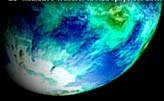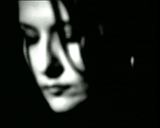
 Author of all texts
about mythology on
these web-pages is
Lidija Bajuk:
Author of all texts
about mythology on
these web-pages is
Lidija Bajuk:
|
lidija.bajuk@posluh.hr
scena.hgu.hr/lidija-bajuk/
- The Sky
- The Mountain
2. PERUNIKA
- Leluya
- Ball lightning
3. AQUARIUS
- Candlemen
WATER MAID
- Fairies
- Witches
4. DRAGON
- Water
SNAKE
- Bogorodica
(Rainbow)
5. GREEN GEORGE
- The Moon
- Corn Spirit
6. LEPA MARA
- Hair
- Embroidery
7. GRABANCIJAŠ
- Light
8. PESJANEK
- Forest
9. LITTLE RED HAT
(DWARF)
- The Cap, Little Hat
10. STRAHE & MRAKI
(GIANTS)
|
STRAHE
STRAHE (DIVOVI, DŽIGANTI, DŽINOVI, GIGANTI, GOROSTASI,
KOLOSI, ORIJAŠI)
|
|
Old people from Podravina speak of huge skeletons they found when they were cutting down trees. The bad ones destroy the crops with their tempestuous breath. The good ones are protectors, helpers and servants to people who offer them sacrifices (bread and wine for Christmas, a piece of cloth when weaving, etc.) Together with the water man, ovasar, a huge cretaure with a tail, lives around mills. It looks like the strong repac (''the tailed one''). It is interesting that different frightening night creatures are called zmamorije in Istria. The name is an amalgamation of two words: zmaj (dragon) and mor(ij)a, i.e. zmija (snake). It is a well known fact that dragons are often represented as having more than one head. Triglav or Troglav (''the three-headed one'') is like that. It is a goodnatured giant with a veil over its head, placed there because it doesn't want to look at or hear about the sins of mankind. It brings spring, fertility and fruitfulness. Mountains Triglav and Troglav are named after it. Evil giants (eg. Leđan) have taught people to be proud, gluttonous, disobedient, dishonest, thieving, wasteful, violent and cruel. Luckily, Perun chased them up north with his thunders, and turned the walls of their icy city into sluggish water. The three Croatian giantesses, called Bojana, (D)Ivana and Zorana, are sometimes very generous, giving light, warmth, life and plenitude to people and sometimes miserly and evil, like Morana, the fourth giantess. This means that giants, dogheads, different spirits, gleaming souls and apparitions, water men, dragons and snakes, as well as giant, stone, fiery or cursed armies come from the same origin. They were created becase people were afraid of the vengeance of fallen gods, or of dark, poverty, sickness, war and death. They are always around, even when it is warm and there is enough food. But then, they are not as big or as strong and are not as dangerous as when it is cold. They are a constant reminder of the power of the nature and how pernicious excessiveness can be. Further proof of the nature of such creatures are legromanti. Croats say that they are good when they are small and evil when they are big. They are always fighting for power. Creatures called Krsnik can also get very big. With their height and power they fight the werewolves. An old woman from Medjimurje said that in the old days children used to be father's (their foot was the size of a human body), today they are son's (they are the usual size) and in the future they will be spirit's (the size of the human foot). The genius of film-making, the Japanese director Akira Kurosawa says that same in his film titled ''Dreams''. All Croatian giants gather at the Divič-mountain. Human heroism has its origin in the tales of giants. |